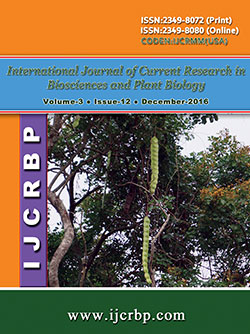 |
Online ISSN : 2349-8080 Issues : 12 per year Publisher : Excellent Publishers Email : editorinchiefijcrbp@gmail.com |
To obtain the key genes for terpenoid saponins biosynthesis, a new squalene synthase gene was isolated by PCR from the leaves of Ginkgo biloba, named GbSS. And we also predicted the structure and physicochemical property of squalene synthase protein. The length of GbSS gene cDNA is 1998 bp, encoding 410 amino acids. The deduced protein sequence of GbSS has high homology with squalene synthase proteins from other plants, especially the gymnosperms. The putative GbSS protein is a hydrophilic protein and contains one putative transmembrane helices, it may be located in the plasma membrane and does not contain a signal peptide. Phylogenetic analysis revealed that the GbSS was closely related to TcSS, PmSS clustered into a single group, suggesting GbSS and squalene synthase from other Gymnosperms plants may be the same ancestor. These results provided a basis to further analyze the mechanism of terpenoid saponins biosynthesis of Ginkgo biloba.
